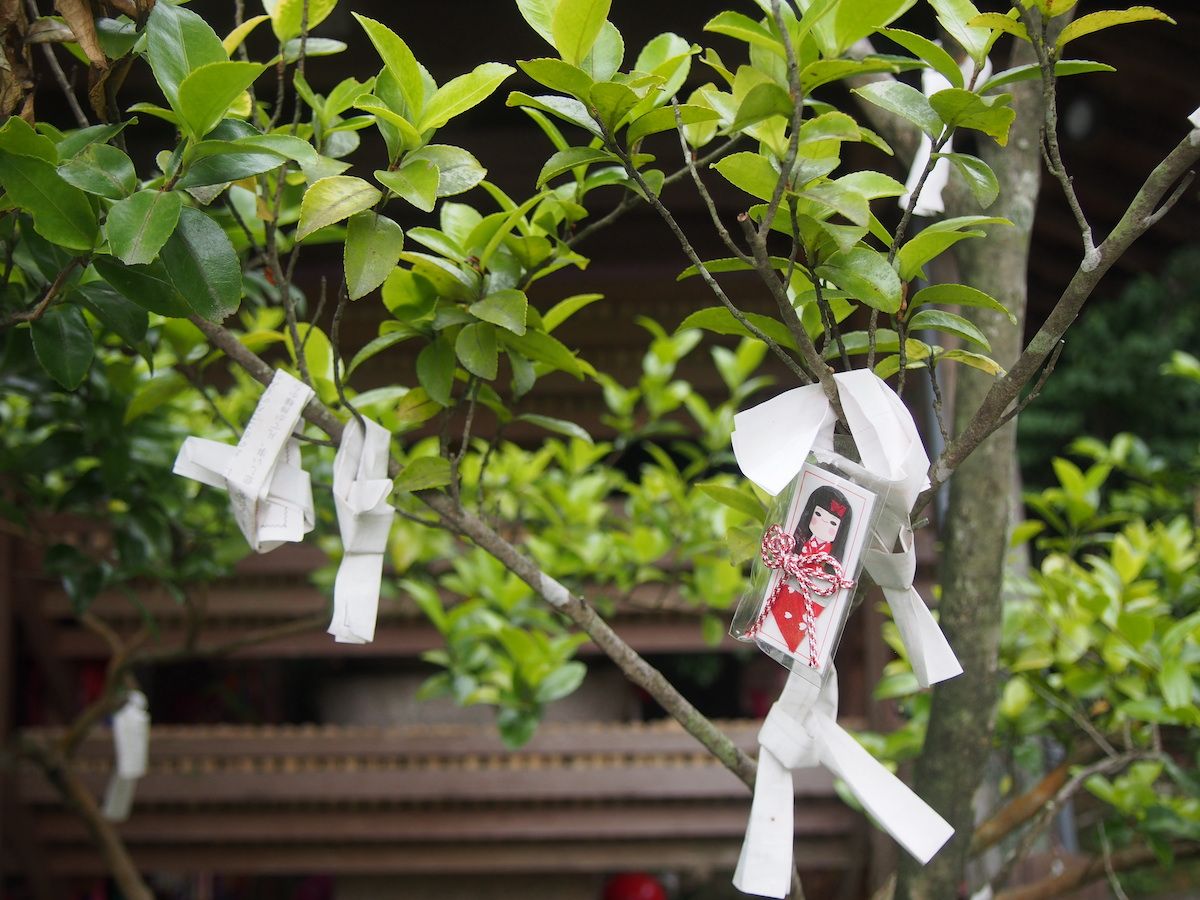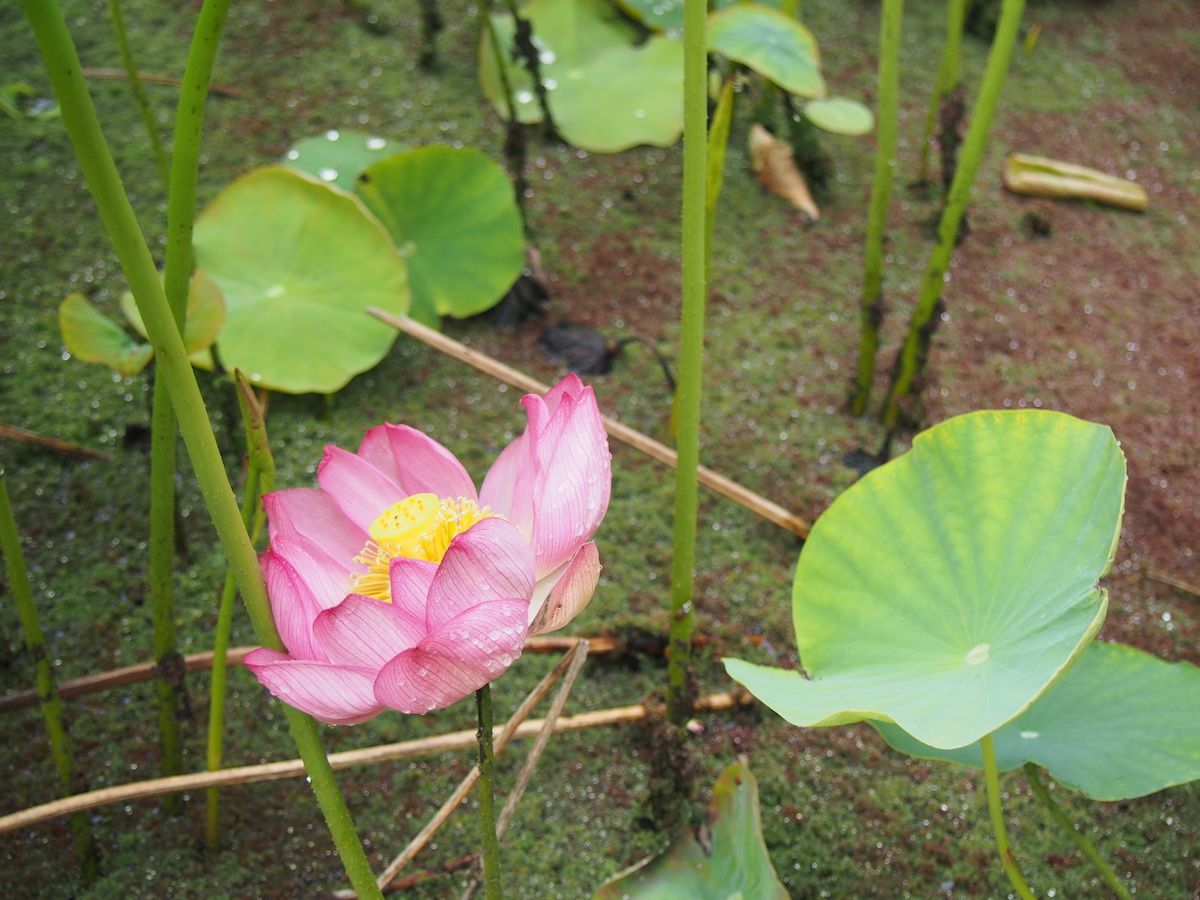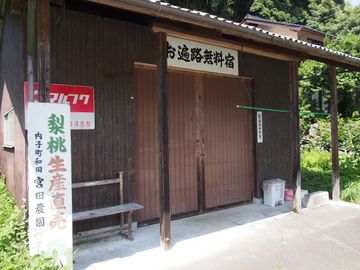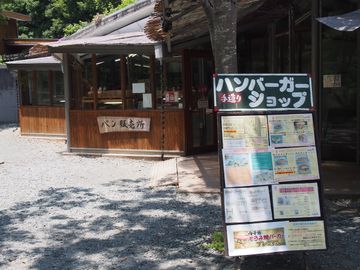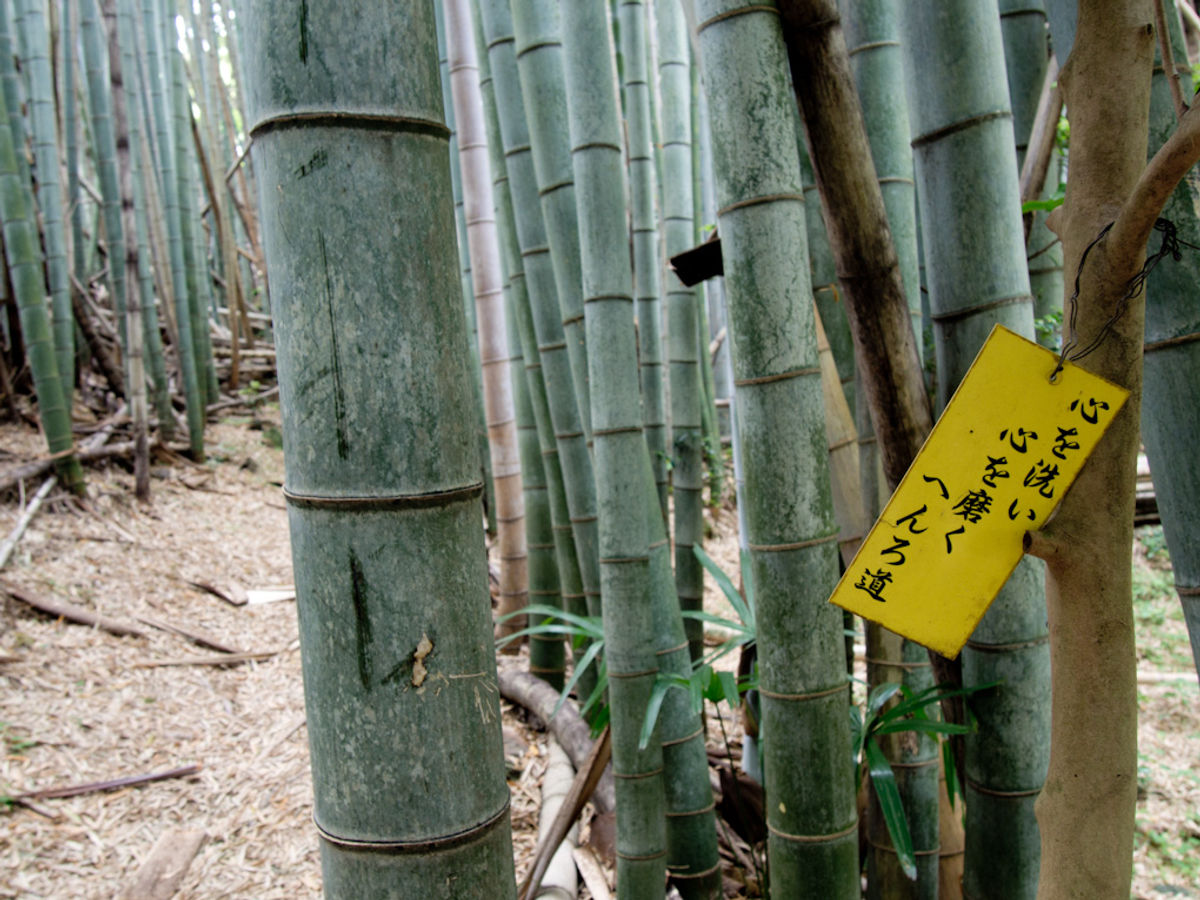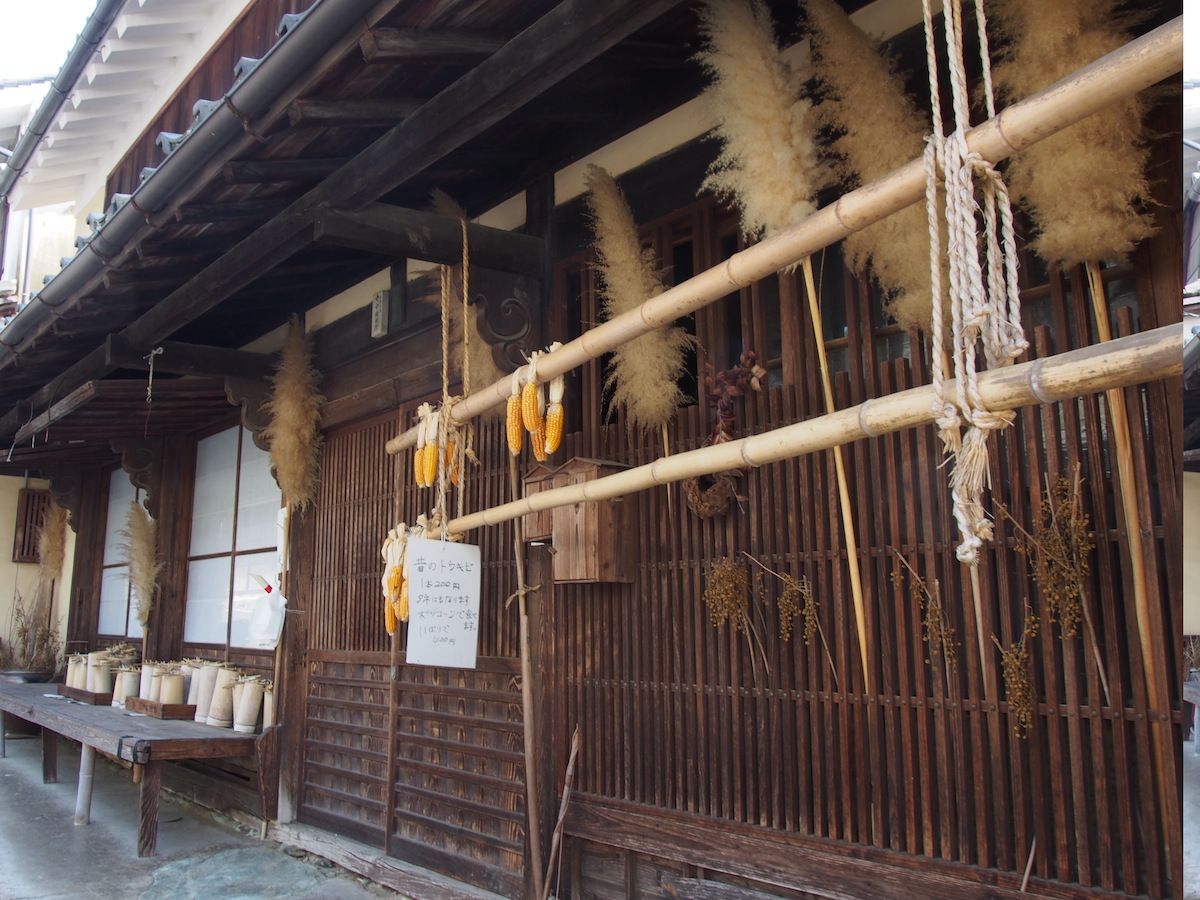
Uchiko is a town seemingly frozen in time from the Edo (1603–1867) and Meiji (1868–1912) periods of Japan. It sits right next to the main pilgrimage path and is well worth taking a break from your walk to explore. The main street spans about 600 meters and is lined with shops and townhouses preserved in its original structure. Notable architectural features include the dark gray kawara roof tiles and wooden lattices, or koshi (格子). The buildings are often quite narrow, which originated from properties being taxed according to their widths in the Edo Period. You will find many other historical structures in the surrounding streets as well.
Uchiko was once famous for its wax production, due to a species of tree that was abundant in the area that carried fruit which wax can be made from. The wax trade in Uchiko was not only wide-spread in Japan, but also attracted a wide range of buyers from overseas. The Haga family was the biggest and most well-known wax producer at the time. As the family grew larger, to avoid confusion, the family name evolved into Honhoga (original-Haga), Kamihaga (upper-Haga), Nakahaga (middle-Haga), and Shitahaga (lower-Haga) according to their location in town. However, as time went on and electricity became the norm in common households, the popularity of candles waned, and so did the town of Uchiko.
Candle making has transformed from a once bustling trade in Uchiko to the preservation of ancient techniques and art passed through the generations. Today, you can still find the single candle shop in town, where the friendly shop owner demonstrates his wax-making methods and teaches visitors about the complex art of wax-making. The notable residential houses that have been preserved until this day include homes of the Honhaga family, the Kamihaga family, and the Omura family.
Many shops here are still in full operation. You will find traditional street foods and snacks like grilled mochi, spiced corn, pickled sour plum, and egg vinegar. Some of the shops don’t even have anyone manning the place. The prices are displayed to passerbys, and interested buyers will pay by simply putting the money down and taking what they purchased.
On one end of the main street is the famous old theater (built in 1916), Uchikoza, which is another must-see while you’re there. The Uchiko Historical Street has been designated as one of the Important Preservation Districts for Traditional Buildings in Japan.
It is recommended that you come earlier in the day after 11am when most shops will be open, but before 5pm when shops will start closing. If you have some time to spare, there is also a history museum in town that features life-sized displays of the homes, pharmacies, and general stores of the time.
Key Distances & Elevations



